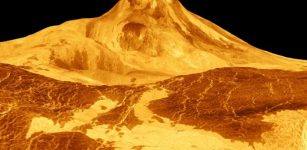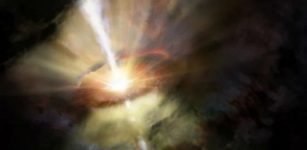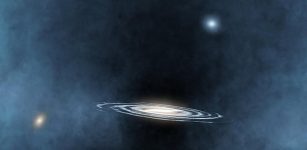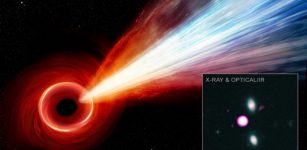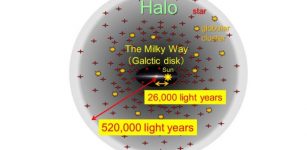A New Stellar Theory To Explain The Origin Of Phosphorus – Proposed
Eddie Gonzales Jr. – MessageToEagle.com – Astronomers have proposed a novel theoretical proposition to explain the origin of phosphorus, an element significant for sustaining life on our terrestrial abode.
Artist’s impression of this research. Credit: NAOJ
This hypothesis postulates that a specific category of stellar detonations, designated as “ONe novae,” could serve as a predominant source of phosphorus.
In the aftermath of the cosmic event known as the Big Bang, the vast expanse of the universe was predominantly composed of hydrogen, with an overwhelming majority of matter existing in this primordial form.
The formation of other elements occurred at a later stage, facilitated by nuclear reactions within the interiors of stellar bodies or during the cataclysmic explosions of stars, referred to as novae or supernovae. However, the diversity of stellar objects and the multitude of mechanisms through which they can undergo such explosive events have presented a complex puzzle.
Astronomers continue their pursuit of unraveling the intricate processes that played a pivotal role in shaping the observed abundance of elements permeating the universe.
In this study, Kenji Bekki, at The University of Western Australia, and Takuji Tsujimoto, at the National Astronomical Observatory of Japan, proposed a new model based on oxygen-neon novae, denoted as “ONe novae,” to explain the abundance of phosphorus.
A ONe nova occurs when matter builds up on the surface of an oxygen-neon-magnesium-rich white dwarf star and is heated to the point where it triggers a self-sustaining, rapid nuclear fusion reaction.
This is known as ‘run-away nuclear fusion ‘, which leads to a ONe nova.
The model postulates that a substantial quantity of phosphorus will be released during a ONe nova event, and the frequency of such occurrences is contingent upon the chemical composition, with a particular emphasis on the iron content of the stars.
The researchers estimate that the rate of ONe novae reached its zenith approximately 8 billion years ago, implying that phosphorus would have been readily available during the formation of our solar system, which started around 4.6 billion years ago.
The model postulates that ONe novae will generate a chlorine enhancement analogous to the phosphorus enhancement. There is not yet enough observational data for chlorine to confirm this and it provides a testable hypothesis to check the validity of the ONe novae model.
Future observations of stars in the outer part of the Milky Way galaxy will provide the data needed to see if the predicted iron dependency and chlorine enhancement match reality, or if a rethink is needed.
The study has been published in The Astrophysical Journal Letters.
Written by Eddie Gonzales Jr. – MessageToEagle.com Staff Writer


